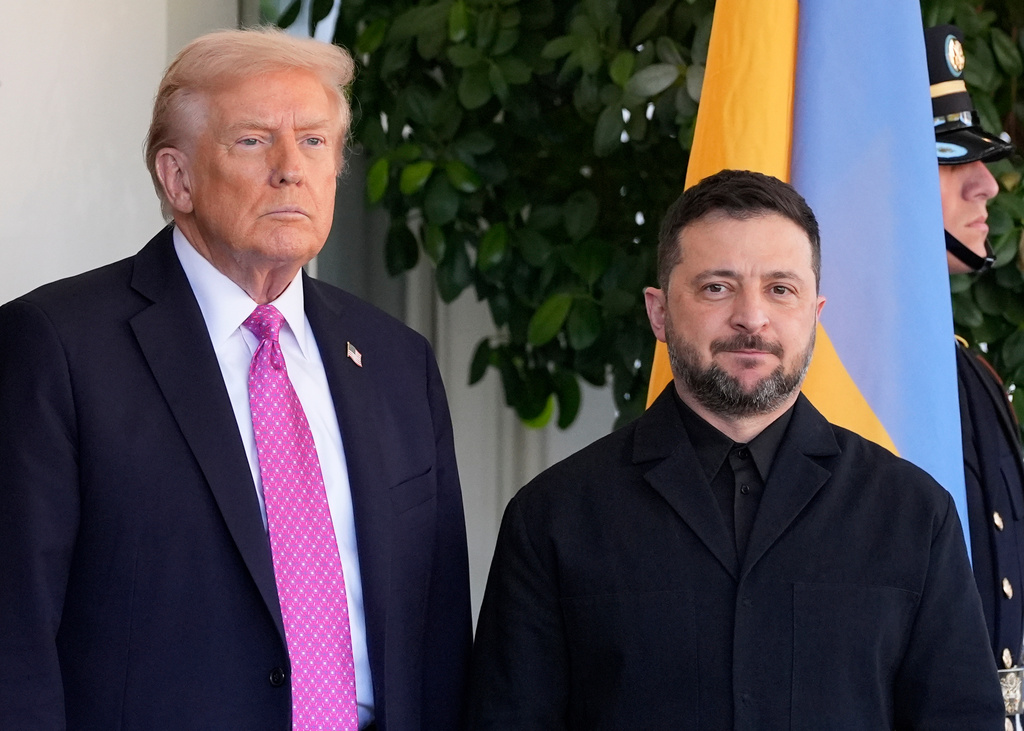U.S. Floats NATO-Style Security Guarantees for Ukraine in Draft Peace Framework

The United States has proposed giving Ukraine security guarantees modeled on NATO’s collective defence clause.
The Gaze reports this, referring to a draft document obtained by Axios.
The draft, passed to President Volodymyr Zelenskyy alongside a separate 28-point “peace plan,” envisages a 10-year security arrangement under which a major renewed Russian attack on Ukraine would be treated as a threat to the entire transatlantic community.
Under the text cited by Axios, the United States “confirms” that a significant, deliberate and prolonged armed assault by Russia on Ukraine would be seen as an attack endangering peace and security in the Euro-Atlantic area.
In such a case, the U.S. president, after urgent consultations with Ukraine, NATO leadership and European partners, would decide on the measures needed to restore security.
Those measures “may include the use of armed forces, intelligence and logistical support, economic and diplomatic steps, and other actions deemed appropriate,” the draft says. A joint mechanism involving NATO and Ukraine would review any claims that the peace settlement had been violated.
Several key NATO members – including France, the United Kingdom, Germany, Poland and Finland – are named in the draft as explicitly recognising Ukraine’s security as “an integral part of stability in Europe” and pledging to act alongside Washington in the event of future Russian aggression in order to maintain “unified and credible deterrence.”
The White House has publicly argued that the emerging plan could be “beneficial for both sides,” while Ukrainian officials have confirmed that Zelenskyy has received the draft from the American side and is prepared to discuss it with U.S. President Donald Trump and his team in the coming days.
The security-guarantees text is designed to sit alongside a separate 28-point framework, also reported by Axios, that sketches out terms for a possible settlement between Kyiv and Moscow.
According to the media, that broader draft would, among other things:
– freeze NATO enlargement to include a formal Ukrainian renunciation of NATO membership and a commitment by the Alliance not to admit Ukraine in future;
– limit Ukraine’s armed forces, capping troop numbers well below current wartime levels;
– codify territorial changes, with Crimea and occupied parts of Donetsk and Luhansk recognised as de facto Russian, and the current front line in parts of Kherson and Zaporizhzhia turned into a demarcation line;
– trade sanctions relief for Russia against reconstruction funds, gradually reintegrating Moscow into the global economy while directing portions of frozen Russian assets into a Ukraine recovery and investment package;
– lock in Ukraine’s non-nuclear status and expand U.S.–Russian arrangements on nuclear arms control and broader security dialogue;
– impose political conditions, including rapid elections in Ukraine, a sweeping amnesty for wartime actions, and the creation of a “Peace Council” chaired by Trump to monitor compliance.
Supporters inside the Trump administration present the package as a way to halt fighting quickly, rebuild Ukraine and “reset” relations with Russia under heavy international oversight.
Critics in Kyiv and across Europe, however, have warned that tying strong security guarantees to far-reaching concessions on territory, NATO membership and sanctions could hard-wire Russian gains into the post-war order and leave Ukraine dependent on political will in Washington and other capitals.
For now, the documents remain proposals under discussion. Zelenskyy has said he is ready to explore “diplomatic possibilities” but insists any deal must deliver a sustainable peace and prevent a third Russian invasion of Ukraine.
As The Gaze reported earlier, Ukraine, the United States, and the European Union are jointly developing a single, unified peace plan.